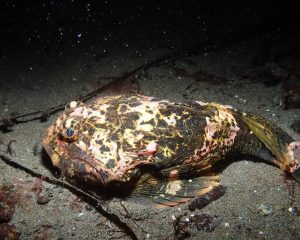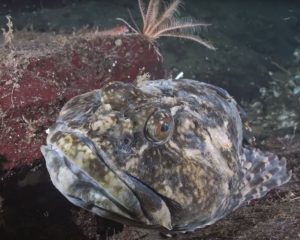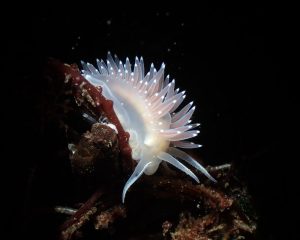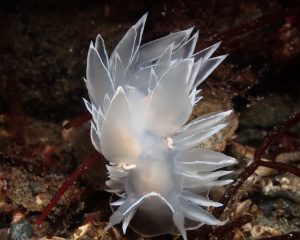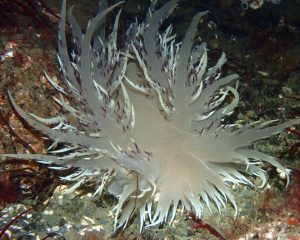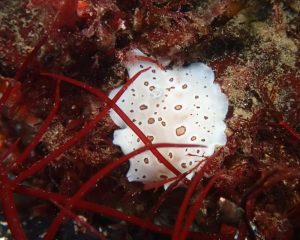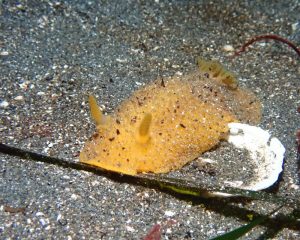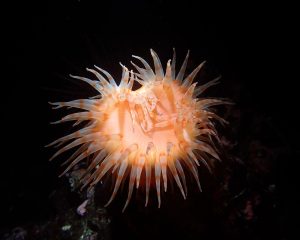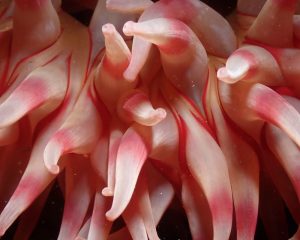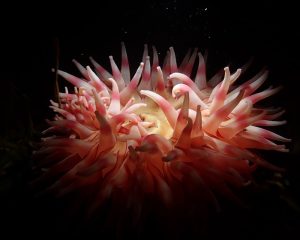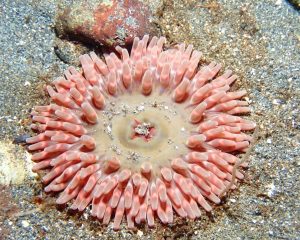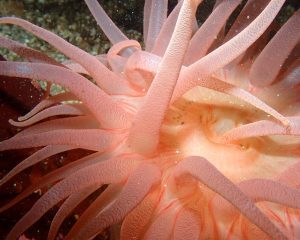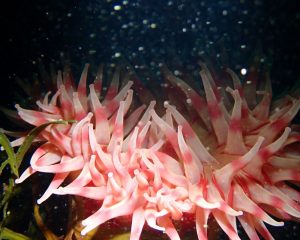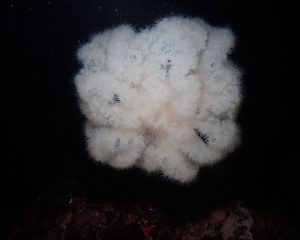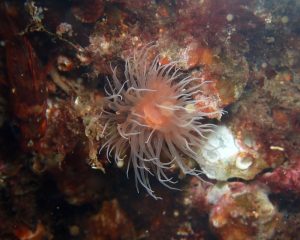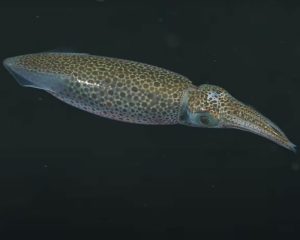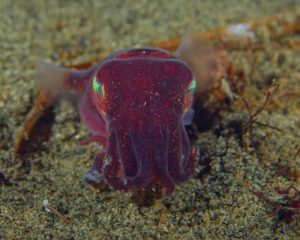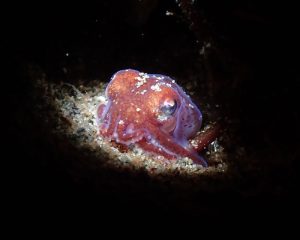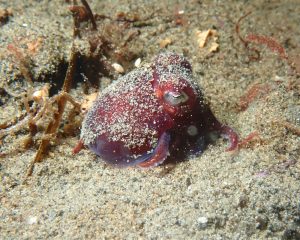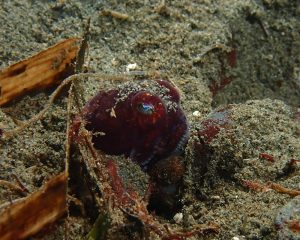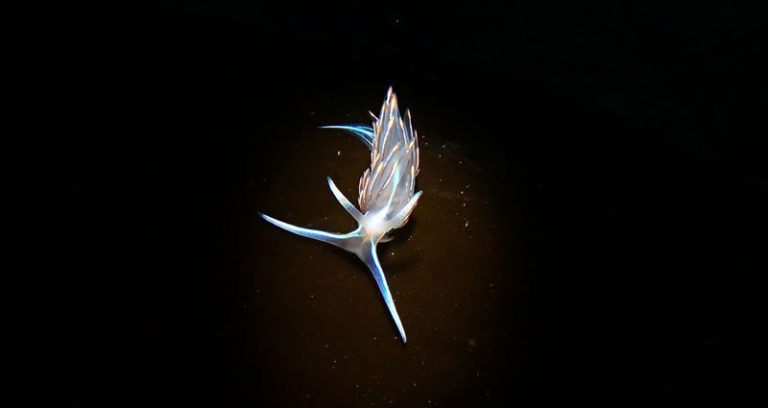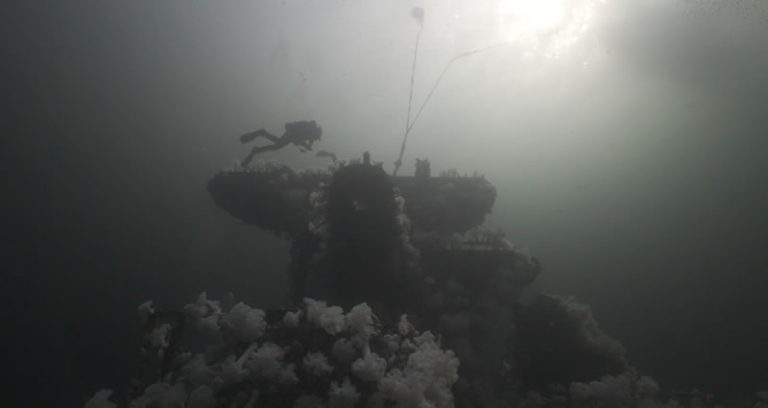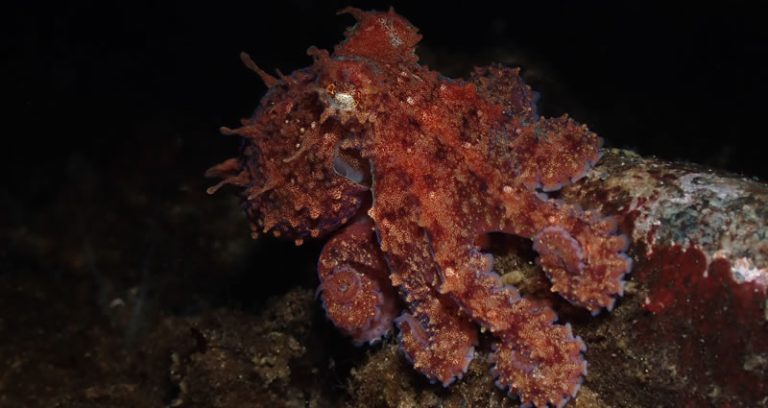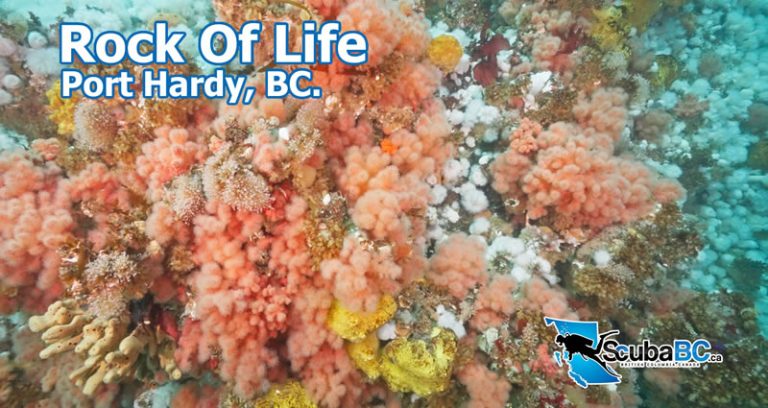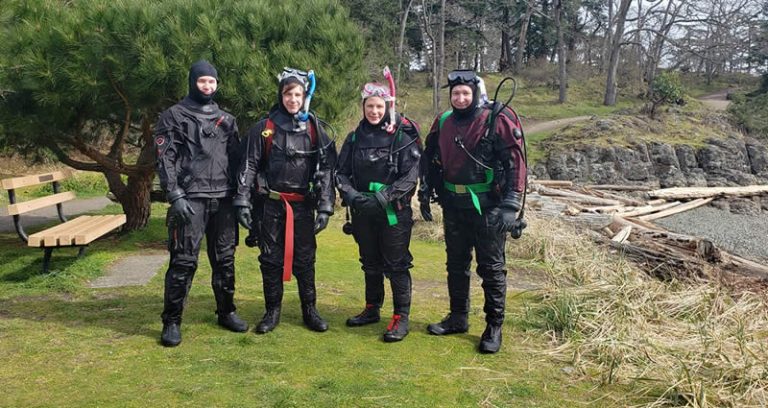Marine Life You’ll See Scuba Diving Off Vancouver Island
Wondering about the marine life you'll see scuba diving off Vancouver Island? Vancouver Island, located off the west coast of British Columbia, Canada, is a scuba diver's paradise with its diverse and abundant marine life. The unique combination of cold, nutrient-rich waters and the varied underwater landscape creates an ideal environment for a wide variety of marine species. In this article, we will explore some of the fascinating creatures that call the waters surrounding Vancouver Island home.
Giant Pacific Octopus

The Giant Pacific Octopus is the largest species of octopus in the world, with an impressive size that can reach up to 30 feet in arm span and weigh up to 150 pounds. This highly intelligent cephalopod is known for its incredible problem-solving abilities, curiosity, and adaptability. The Giant Pacific Octopus inhabits the waters around Vancouver Island, where it can be found in abundance hiding in their dens which are generally crevices and cracks, or under rocks. If you're really lucky, you might catch one out in the open, which always makes for an amazing underwater experience.
These octopuses have an incredible ability to change their color and texture to blend seamlessly into their surroundings, making them masters of camouflage. They are also known for their powerful arms, which are lined with suckers that are not only used for locomotion but also for capturing prey, such as crabs, clams, and even small fish. Diving with a Giant Pacific Octopus is a truly memorable experience, as their inquisitive nature often leads them to interact with divers in fascinating ways.
The Giant Pacific Octopus is known to be highly adaptable to different environmental conditions and can thrive in a wide range of temperatures, salinities, and depths, which is a testament to their remarkable ability to survive in the dynamic waters of the Salish Sea around Vancouver Island.
One of the most captivating aspects of the Giant Pacific Octopus is their complex reproductive behavior. The female octopus will lay thousands of eggs in a secluded den and carefully guard them, ensuring their safety until they hatch. During this time, she will not leave the den to hunt, relying solely on stored energy reserves to sustain her. Once the eggs hatch, the female octopus dies, and the tiny hatchlings drift into the open ocean as plankton before eventually settling on the ocean floor to begin their lives as juvenile octopuses.
The Giant Pacific Octopus is a keystone species in the Salish Sea ecosystem, meaning their presence has a significant impact on the overall health and balance of the marine environment. Their role as both predator and prey, as well as their ability to adapt to changing conditions, makes them essential for maintaining the delicate equilibrium that supports the rich diversity of marine life around Vancouver Island. This extraordinary creature continues to captivate divers, researchers, and ocean enthusiasts alike, as they uncover more secrets about the Giant Pacific Octopus and their incredible lives beneath the waves.
What Are The Best Dive Sites To See Giant Pacific Octopus?
Octopus are fairly abundant in the Salish Sea and it's possibly to find them at most dive sites if you know where to look. The most popular "Octopus" dives would probably be the Ogden Point Breakwater in Victoria, along with Madrona Point and Oak Leaf Park in Nanoose, near Nanaimo.
Pacific Spiny Lumpsuckers

The Pacific Spiny Lumpsucker (Eumicrotremus orbis) is a small, peculiar-looking fish that can be found in the waters of the Salish Sea around Vancouver Island. This captivating little creature, which grows to a maximum length of only around 7 centimeters, has a spherical body covered in modified scales called "tubercles" that give it a spiky appearance. Its pectoral fins have evolved into a sucker disc, which the fish uses to cling to rocks, seaweed, and other surfaces in the water, allowing it to maintain its position in the face of strong currents or tidal surge.
The Pacific Spiny Lumpsucker is a bottom-dwelling fish that prefers rocky habitats in shallow to moderately deep waters, from the intertidal zone down to depths of around 146 meters. Its diet consists primarily of small invertebrates, including crustaceans and mollusks. One of the most interesting aspects of this species is its reproductive behavior. During the breeding season, the female lays clusters of adhesive eggs in rocky crevices or on seaweed. Afterward, the male takes on the responsibility of guarding and aerating the eggs until they hatch, fanning them with his tiny fins to ensure they receive enough oxygen.
Despite their small size and peculiar appearance, Pacific Spiny Lumpsuckers are an intriguing species for divers and marine enthusiasts to observe in the waters off Vancouver Island. Their unique shape, spiky texture, and distinctive sucker disc make them an unforgettable sight, and their fascinating reproductive behavior adds to their appeal. The Salish Sea is a treasure trove of marine life, and the Pacific Spiny Lumpsucker is just one of the many fascinating inhabitants that can be encountered in this diverse and vibrant ecosystem.
The best time to see Pacific Spiny Lumpsuckers in Vancouver Island waters id during the the fall and winter from November through January. The visibility is better during these months and the lumpsuckers come into the shallows to lay their eggs. These are very difficult little fish to find as they are small and their camoflauge is excellent.
What is the best dive site to see Pacific Spiny Lumpsuckers?
Any shallow bay dive can be a good place to find lumpsuckers. Some popular dive sites to find Pacific Spiny Lumpsuckers include Oak Leaf Park in Nanoose, Finn Beach (Neck Point Park) in Nanaimo, and Singing Sands in Courtenay.
Wolf Eels
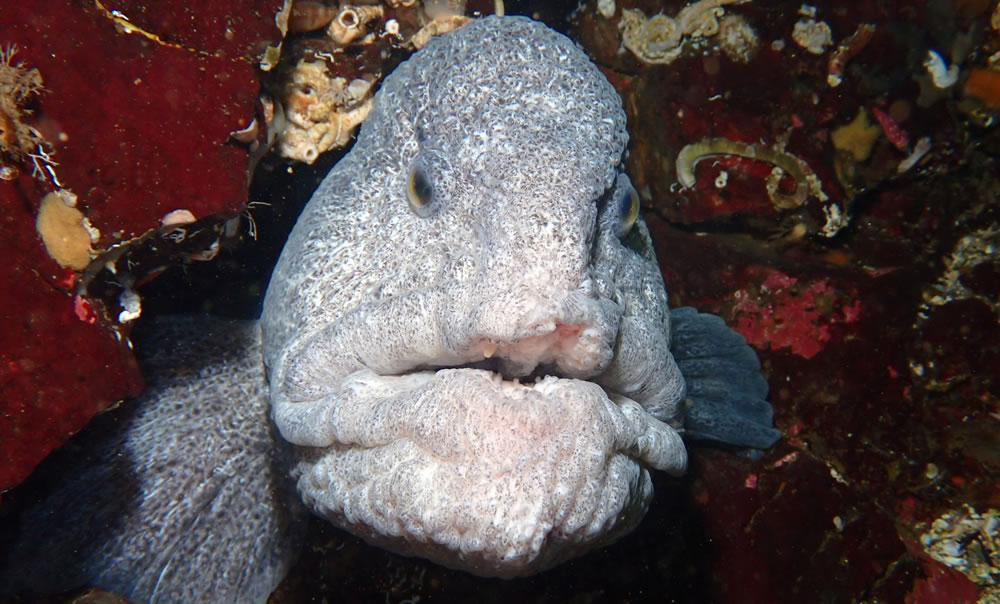
Wolf eels (Anarrhichthys ocellatus) are a fascinating species of fish found in the Salish Sea around Vancouver Island. Though their name might suggest otherwise, wolf eels are not true eels but are actually part of the wolf fish family. They have an elongated, snake-like body that can reach up to 2.4 meters in length and a distinctive, large head with powerful jaws filled with sharp teeth. Despite their somewhat intimidating appearance, wolf eels are known for their docile nature and are often curious and friendly towards divers.
These captivating creatures prefer rocky habitats and can be found in depths ranging from 5 to 225 meters. They are especially fond of residing in crevices and caves, where they can easily hide from potential predators. Wolf eels are carnivorous, feeding primarily on sea urchins, crabs, and other hard-shelled invertebrates. Their strong jaws and sharp teeth are well-suited for crushing the shells of their prey, allowing them to access the soft flesh inside. The Vancouver Aquarium and the Seattle Aquarium both provide valuable information on the biology and ecology of wolf eels, contributing to the knowledge and understanding of this fascinating species.
Wolf eels are a popular attraction for divers and marine enthusiasts exploring the waters of the Salish Sea off Vancouver Island. Encounters with these gentle giants offer a unique experience, as they are often unafraid of human interaction and may even approach divers with curiosity. Observing wolf eels in their natural habitat is a testament to the incredible diversity and richness of the marine life found in the Salish Sea, and underscores the importance of preserving and protecting this precious ecosystem for future generations.
Mating and reproduction in wolf eels are characterized by a strong monogamous bond between a male and a female. They form lifelong pairings, and once a pair is established, they share a den and defend it from intruders. Mating usually occurs during the fall and winter months. During this time, the female lays up to 10,000 eggs, which are fertilized by the male. The eggs are then cared for by both the male and the female, who take turns guarding the nest and ensuring proper oxygenation of the eggs by fanning them with their pectoral fins.
The incubation period for wolf eel eggs is relatively long, lasting about 13 to 16 weeks. The eggs are bright orange and laid in a large, tangled mass that is held together by a sticky substance produced by the female. The parents diligently guard their eggs until they hatch, aggressively defending their territory from potential predators. Once the eggs hatch, the tiny larvae drift into the open ocean, where they spend their early lives as plankton. After several months, the juvenile wolf eels settle on the ocean floor and begin to search for a suitable den.
The monogamous nature and parental care exhibited by wolf eels are unusual among fish species, making them a fascinating subject for marine biologists and researchers.
Where Is The Best Place To See Wolf Eels On Vancouver Island?
If you're looking for the best chance to see wolf eels then a dive charter is probably your best bet. Nanaimo Diver Outfitters, based out of Nanaimo, regularly takes divers out to a site called Clarke Rock and it's known for it's abundance of wolf eels. It's not uncommon to see several wolf eels on a single dive here. It's not a deep dive and can be accessed by open water and advanced level divers.
Rockfish
Rockfish are an incredibly diverse group of fish found throughout the Salish Sea and the waters surrounding Vancouver Island. With over 30 different species in this region, each boasts its own unique coloration and markings, making them a captivating sight for divers. Some of the more commonly encountered species include the Yelloweye Rockfish, Quillback Rockfish, China Rockfish, Copper Rockfish, and Black Rockfish. However, the waters of the Salish Sea are also home to other fascinating rockfish species such as Lingcod, Kelp Greenling, Rock Greenling, and Painted Greenling.
Lingcod, for instance, is a large predatory fish with a mottled green and brown coloration that helps it blend into its rocky surroundings. Its large mouth filled with sharp teeth enables it to feed on various prey, including smaller rockfish. You'll see lingcod cruising around most dive sites. Some of the largest ling cod are found on the various artificial reefs and ship wrecks.
Kelp Greenling, Rock Greenling, and Painted Greenling are three other fascinating rockfish species found in the Salish Sea. Kelp Greenlings, as their name suggests, are often found in kelp forests, sporting blue and brown mottled patterns. Rock Greenlings have a similar coloration but tend to inhabit rocky areas with strong currents. Painted Greenlings, meanwhile, are smaller fish with intricate patterns of orange, white and red, making them a stunning sight for divers to encounter and always an excellent photography or video subject.
These diverse rockfish species typically inhabit rocky habitats and kelp forests, feeding on a variety of prey, such as small fish, shrimp, and plankton. Each species has its own distinct characteristics, making them an intriguing group of fish to observe and identify during a dive. The waters around Vancouver Island provide divers with the opportunity to encounter these diverse and colorful rockfish species, contributing to the incredible variety of marine life that makes this region such a special and unique diving destination.
Sculpins
The Salish Sea, surrounding Vancouver Island, is a haven for a diverse group of fish known as sculpins. These bottom-dwelling fish are characterized by their large, flattened heads, and a myriad of cryptic color patterns that provide them with excellent camouflage against the rocky and sandy habitats they inhabit. Sculpins are often overlooked, but their unique appearance and behavior make them a captivating subject for scuba divers exploring the waters around Vancouver Island.
One of the most intriguing (and popular) species of sculpins found in the Salish Sea is the Grunt Sculpin. This small, peculiar-looking fish is easily recognized by its compressed body, large head, and distinctive coloration, which includes a mix of orange, brown, and white hues. The Grunt Sculpin is known for its unusual method of locomotion, which involves hopping along the seafloor using its modified pelvic fins.
The Cabezon, another interesting species of sculpin, is the largest of the group and can reach up to 25 inches in length. The Cabezon has a broad, flattened head with a wide mouth and a row of sharp teeth. It displays a range of colors, from shades of green and brown to red and blue, which allows it to blend seamlessly into its environment. The Buffalo Sculpin, another species commonly found in the Salish Sea, has a similarly flattened head but is distinguishable by its mottled coloration and the spines on its head that resemble horns.
In addition to the Grunt Sculpin and Cabezon, the waters off Vancouver Island are home to the Red Irish Lord and Sailfin Sculpin. The Red Irish Lord is a striking species with a robust, reddish body covered in intricate patterns of yellow or white, while the Sailfin Sculpin is known for its tall, sail-like dorsal fin that is adorned with intricate patterns. These diverse and captivating sculpin species, along with many others, contribute to the extraordinary array of marine life that awaits scuba divers exploring the Salish Sea around Vancouver Island.
Nudibranchs
The Salish Sea is home to a diverse and colorful array of marine life, including a remarkable variety of nudibranchs. Nudibranchs, also known as sea slugs, are soft-bodied mollusks that exhibit a stunning range of shapes, sizes, and colors. With over 200 species found in the Salish Sea, divers have the opportunity to spot a multitude of these beautiful creatures during their underwater adventures.
One of the most striking nudibranch species found in the Salish Sea is the Hooded Nudibranch (Melibe leonina). This translucent sea slug features a large, expandable oral hood, which it uses to capture small prey such as plankton. The Opalescent Nudibranch (Hermissenda crassicornis) is another eye-catching species, adorned with vibrant shades of orange, blue, and white that run along its body. The Red-Gilled Nudibranch (Flabellina verrucosa) is a slender, elongated sea slug characterized by its deep red gills and rhinophores, while the Frosted Nudibranch (Dirona albolineata) showcases a more subtle beauty, featuring a translucent body with delicate white markings.
In addition to these striking species, divers may also encounter several other types of nudibranchs in the Salish Sea, such as the White-Lined Dirona (Dirona picta), which has a pale body adorned with white lines and orange-tipped rhinophores. The Monterey Dorid (Doris montereyensis) is another fascinating species, characterized by its bright yellow color and bumpy texture. With such an incredible variety of nudibranchs inhabiting the waters off Vancouver Island, every dive offers the chance to discover and appreciate the unique beauty of these captivating sea slugs.
Sea Anemones
The Salish Sea boasts an impressive assortment of sea anemones. These fascinating invertebrates, related to jellyfish and coral, are known for their stunning colors, intricate patterns, and unique shapes. They attach themselves to hard surfaces and use their tentacles to capture passing prey. Among the many species found in the waters off Vancouver Island, the Painted Anemone, Plumose Anemone, and Crimson Anemone are particularly noteworthy.
The Painted Anemone (Urticina grebelnyi) is a visually striking species, characterized by its vibrant green, pink, and purple hues, and white oral disc often adorned with radiating lines. This beautiful sea anemone can be found at almost all depths of the Salish Sea accessible by divers. The painted anemone feeds on small fish, crustaceans, and other invertebrates like an unlucky jellyfish.
The Plumose Anemone (Metridium senile) is another eye-catching species, distinguished by its tall, columnar body and feathery tentacles that form a delicate, cloud-like appearance. These anemones are typically white, but can also be found in shades of orange and tan. They thrive in areas with strong currents, attaching themselves to rocks, pilings, and other submerged structures. They can get to be quite large too!
The Crimson Anemone (Cribrinopsis fernaldi), also known as the Fernald's Anemone, is a spectacular species known for its bright coloration, which provides a stunning contrast against the green and brown hues of its surroundings. This large sea anemone can grow up to 10+ inches in diameter and inhabits rocky reefs and walls throughout the Salish Sea. The tentacles of the Crimson Anemone are covered with tiny, stinging cells called nematocysts, which they use to immobilize and consume their prey. Divers exploring the waters off Vancouver Island can look forward to encountering these mesmerizing sea anemones, each with its own unique beauty and charm. They are excellent photo and video subjects too.
Stellar Sea Lions

Steller Sea Lions are large marine mammals that can be found in the waters around Vancouver Island. Especially so during the fall and winter months as they begin to migrate into area in preparation for the spring herring spawn. These social animals are known for their playful nature and impressive size, with adult males weighing up to 2,500 pounds. Divers who encounter Steller Sea Lions will be amazed by their agility and curious behavior as they swim and interact with each other.
As apex predators, Steller Sea Lions play a crucial role in maintaining the balance of the marine ecosystem. They feed on a variety of fish species and invertebrates. Additionally, their presence attracts other marine mammals and bird species, contributing to the overall diversity of the area.
For divers that haven't experienced sea lions underwater before it can be both exhilarating and a little frightening at the same time! While they are mostly playful and gentle, they are still very large, and can swim circles around you. They often show their graceful swimming skills off, doing loops and rolls, as they check you out. They can show up at any time during a dive either individually or in small groups or at some dive sites, in very large groups.
Squid
Scuba diving off Vancouver Island in the Salish Sea offers the opportunity to observe a wide variety of marine life, including some remarkable species of squid. Two of the most fascinating and unique types of squid found in this area are the Stubby Squid and the Opalescent Squid.
The Stubby Squid, also known as Rossia pacifica, is a small and colorful cephalopod that often gets mistaken for an octopus or cuttlefish. With a rounded body, two large, forward-facing eyes, and eight short, muscular arms, this master of camouflage can change the color and texture of its skin to blend in with its surroundings on the seafloor. The Stubby Squid is a fierce predator that feeds on a variety of small fish and crustaceans, making it a unique and important part of the Salish Sea's marine ecosystem.
Another fascinating species of squid found in the Salish Sea is the Opalescent Squid (Loligo opalescens). This type of squid features a long, torpedo-shaped body with two large, almond-shaped eyes and ten arms. The Opalescent Squid is named for the iridescent, opal-like shimmer that runs along its body. Like the Stubby Squid, the Opalescent Squid is a carnivorous predator, feeding on small fish and other marine creatures.
Both the Stubby Squid and Opalescent Squid are favorites among scuba divers in the Salish Sea due to their unique and striking appearances. While they can be difficult to spot due to their exceptional camouflage skills, the opportunity to witness these creatures in their natural habitat is truly awe-inspiring. With the proper diving equipment and experience, scuba divers can explore the fascinating world of these incredible and mysterious creatures of the Salish Sea.
Sixgill Sharks
The Sixgill Shark is a fascinating and elusive species that can be found in the Salish Sea and around Vancouver Island. These sharks are named after their unique physical characteristic of having six gill slits, which distinguishes them from most other shark species that have five. They are one of the largest predatory sharks, growing up to 5 meters in length and weighing over 600 kilograms.
The Sixgill Shark is a deep-water species, typically found at depths of 200-1000 meters. However, they are known to venture into shallow waters at night to feed, making them a very rare and exciting sight for divers. They are typically solitary creatures, but during the summer months, they congregate in deeper waters off the coast of Vancouver Island, providing an opportunity for divers to witness their majestic presence.
While Sixgill Sharks are not considered a threat to humans, they are apex predators and play an important role in maintaining the balance of the ocean ecosystem. Their diet consists of a variety of marine organisms, including fish, crustaceans, and other sharks.
Overall, the Sixgill Shark is a fascinating and awe-inspiring creature that adds to the rich diversity of marine life found in the Salish Sea and around Vancouver Island. For experienced and adventurous divers, encountering a Sixgill Shark in the wild can be an unforgettable and humbling experience, reminding us of the beauty and complexity of the natural world.
Puget Sound King Crab
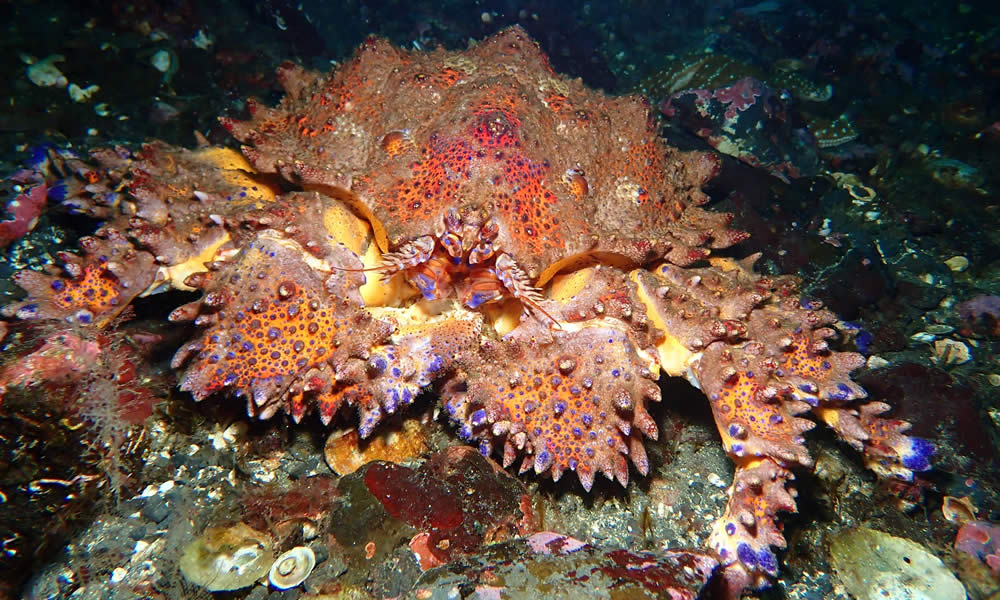
Puget Sound King Crabs are strikingly beautiful crustaceans found in the waters around Vancouver Island. They are easily recognized by their vibrant coloration, which ranges from bright red and orange to purple hues, as well as their distinctive, heavily spined carapace. These crabs can grow up to 8 inches across, and their unique appearance makes them a favorite subject for underwater photographers.
Puget Sound King Crabs are mainly found in rocky areas and kelp forests, where they feed on a variety of organisms, including algae, detritus, and small invertebrates. Their role in the marine ecosystem is that of a generalist grazer and scavenger, helping to maintain the balance of the food web by consuming various types of organic matter. Encounters with these colorful crabs are sure to leave a lasting impression on divers exploring the rich marine life of Vancouver Island.
When Are You Coming Diving On Vancouver Island?
The marine life in Vancouver Island scuba diving is as diverse as it is captivating. From the intelligent Giant Pacific Octopus to the playful Steller Sea Lions, the unique creatures found in these waters offer an unforgettable diving experience. The abundance of marine life in this region is a testament to the health and balance of the local ecosystem, making it a must-visit destination for divers and marine enthusiasts alike.

